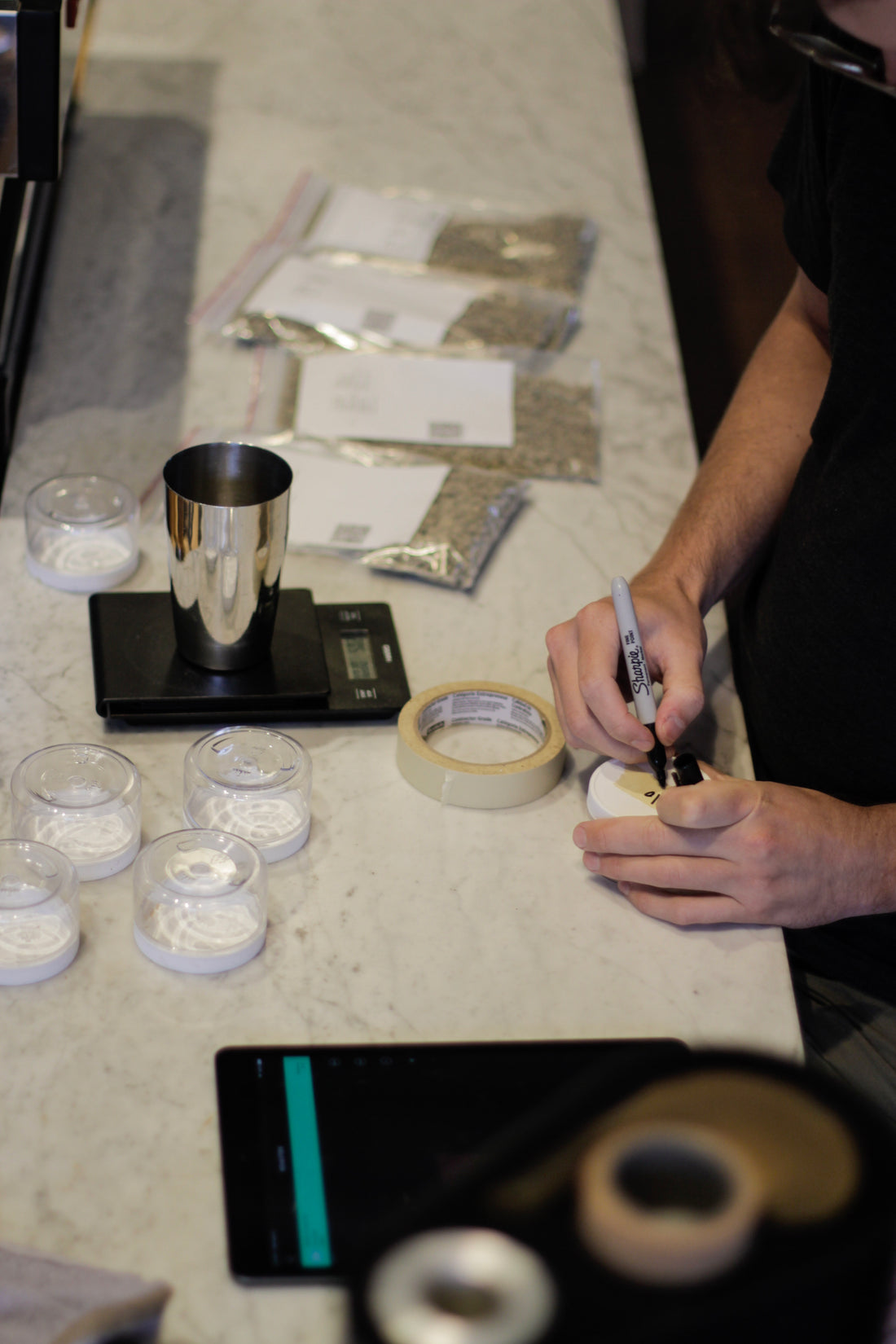
How We Roast: Sample Roasting
As the seasons change here in Seattle, so too does our coffee line up, and with all these new coffees coming in, we thought we’d show you our general process around how we select and roast our coffees. And for every coffee we serve, this starts with sample roasting.
Sample roasting is the process of roasting very small sample quantities of green coffee, typically 200-500 grams, that we receive at two different points after harvest. First, we receive “pre-ship” samples, sent from the origin country before shipment to the United States. These are the samples we use to evaluate whether to purchase a coffee. Typically, we will receive a whole set of samples from an importer, some coffees we’ve served before and some new ones, and we narrow it down to which we want to purchase through multiple cupping sessions.

Once we’ve purchased the coffees, we will also receive “arrival” samples after they’ve arrived stateside. These are primarily for quality control purposes (ideally your pre-ship and arrival samples taste identical, but there will always be some variation after sitting in a container ship for weeks), but also to give a general idea of how we should profile it for a full production roast.
Both of these stages are absolutely essential to our selection and roasting process. We are always buying fresh crop coffees, and being able to accurately evaluate a coffee’s quality not only when deciding which to purchase for the year, but after it goes through the shipping process, makes sure that we are able to serve you a delicious cup, untainted by age or defects.

As of late, we have been doing all our sample roasting on an Ikawa Pro roaster. The Ikawa is an excellent little electric hot air roaster, operated by an iPad that allows us to load up any roasting profiles we want and easily control these small, 50 gram batches.. This has been a huge boon for us, as we can have as much precision over our samples as our production roasts, which makes for a very consistent and repeatable process. Now that we have the Ikawa, it’s even easier for us to try as many coffees as we want, allowing us to expand our lineup with coffees that may have seemed too risky with less consistent sample roasts. For those very curious about roasting and the cash to spend, Ikawa even makes a simplified model for roasting at home.
In our next blog post, we’ll be talking about what happens when those coffee shipments finally arrive, and how we prepare them for production roasts and release.
